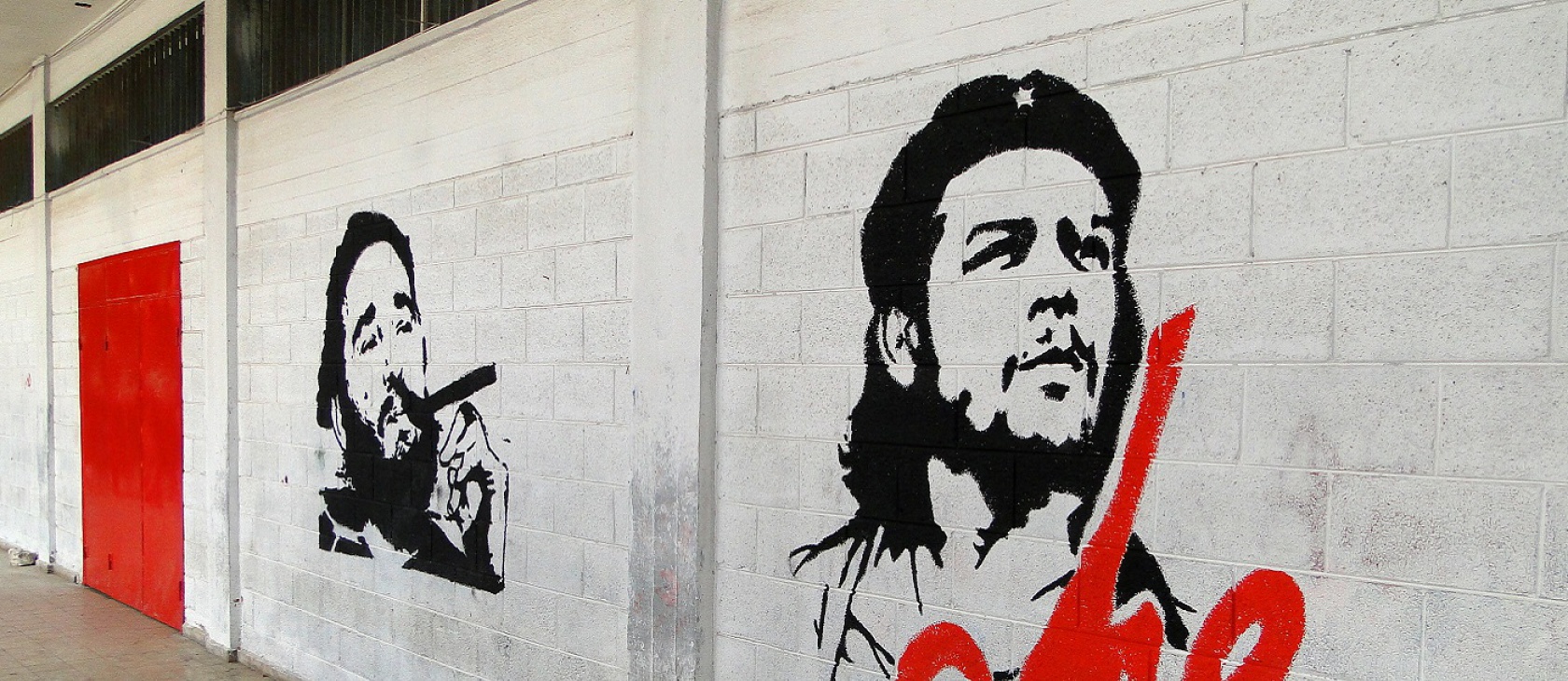Fifty years ago this month, Bolivian government forces shot dead the revolutionary Ernesto “Che” Guevara, ending a decade of Communist activity by the celebrated guerrilla fighter.
American officials, in a private memo, described the cold-blooded killing as “stupid,” and it is easy to see why. Afterwards, as the body was laid out for the world to see, some local people began to cut off bits of his hair as relics. Rather than showing Che's defeat, the image of his corpse bore a striking resemblance to Andrea's Mantegna's “Lamentation of Christ.” In death, Che became more powerful than ever.
Shortly before the killing, Italian publisher Giangiacomo Feltrinello had acquired the rights to buy his Bolivian Diary, and was directed by the Cuban authorities towards Marxist photographer Alberto Korda to find a picture to illustrate it. Korda gave him an image he'd taken seven years previously, and which had until then appeared only on his own wall. When the book was published the following year the photo, showing Guevara looking into the distance and wearing a beret and severe expression, appeared on the front. Today it is known as Guerrillero Heroico - the “Heroic Guerrilla Fighter” – and while the word iconic is overused, it does indeed have a sacred air.
Guerrillero Heroico has since appeared on an untold number of students’ walls, as well as murals, statues, t-shirts, and countless advertising campaigns. According to the Victoria and Albert Museum, it is the most reproduced image in history, and if you don't recognize it, you're probably a Replicant. Soon after Che's death it was adapted by Irish artist Jim Fitzpatrick, who made an even more famous stylised version: Che in black on a sharp red background, and it is this which features on a new stamp issued by the Republic or Ireland, much to the disgust of many Cuban-American exiles.
As Yale Professor Carlos Eire lamented:
Che was my neighbor in Havana, and I actually saw him in the flesh several times. He lived in an opulent mansion just a few blocks from my small house, and also ran the prison of La Cabaña, where some of my relatives ended up being tortured and murdered by him. Their crime was to voice an opinion different from Che’s. Or, in the case of my uncle Filo, it was the simple fact that his son Fernando had voiced an opinion Che didn’t like.
The stamp is in recognition of the Argentinean's ancestry and features a quote from Che's father, Ernesto Guevara Lynch, who said of his eldest that “in my son’s veins flowed the blood of Irish rebels.” Their ancestor, Patrick Lynch, had come from one of the 14 “Tribes of Galway,” the Catholic gentry families that had dominated the county since the twelfth century, and had left in 1740 in the face of growing Protestant domination and repression. Among his descendants are some of the cream of Argentine society, and the younger Ernesto grew up in a comfortable intellectual household that was home to 3,000 books, which he read avidly. Unfortunately, among them were the works of Engels, Lenin, and Marx.
Already from a left-wing family, his political consciousness was further raised during a youthful motorcycle trip around South America, where he witnessed horrific poverty. Later, he wanted to work in Africa and swore “a promise to fight for a better world, for a better life for all the poor and exploited.” Once he might have made a zealous missionary, spreading the faith, setting up rudimentary healthcare services, and fighting oppressive local customs. But in the twentieth century, the faith that attracted angry young men and idealists was Communism.
This bourgeois Argentine brought ruin upon ordinary Cubans, implementing economic policies that had already proved destructive in other countries.
Originally a medic, “Che” rose to become second-in-command of Fidel Castro's revolutionary forces, where he was notorious for shooting deserters, defectors, and informers. He also read to his troops, and ensured the better educated taught the others to read. Many loved him. Che was also extremely brave, on one occasion running into a hail of bullets to throw a comrade over his shoulder. Later, he played a leading part in the Battle of Santa Clara, the revolution's major engagement, holding off forces 10 times as large.
The regime of Fulgencio Batista, which he fought, had little regard for human rights, either – had killed suspected rebels without trial – and the “revolutionary justice” that followed their overthrow was hugely popular. Hundreds were executed during a short time, with Che responsible for between 55 and 105 executions at La Cabaña prison; whether he killed them with enthusiasm or reluctance depends on which version of events you choose to believe. Guevara said shortly before his death:
To send men to the firing squad, judicial proof is unnecessary. These procedures are an archaic, bourgeois detail.
It could be said of his attitudes to Africans or homosexuals that they were … of their time.
Aside from his armed struggle, this bourgeois Argentine brought ruin upon ordinary Cubans, implementing economic policies that had already proved destructive in other countries and installing a dreadfully oppressive regime. Even today, Freedom House still rates Cuba's political rights and civil liberties among the worst on earth, while its GDP per capita is a miserable $7,600. Although Korda had de facto given up the rights to the famous image in the name of Communism, in 2003 his children sued Reporters Without Borders after using the famous photograph in a poster calling Cuba “the world's largest jail,” after 29 journalists had been imprisoned there.
Che expressed no interest in economics, other than the Marxism he believed to be scientific but which was, paradoxically, a faith.
As Cuba's Finance Minister and President of the National Bank, Che was in a position to implement his own socialist economic program. Guevara thought capitalist self-interest was evil, but his plan to use “moral incentives” to encourage workers led to widespread absenteeism and a fall in productivity. He expressed no interest in economics, other than the Marxism he believed to be scientific but which was, paradoxically, a faith. One reporter commented that “'in a sense he was, like some early saint, taking refuge in the desert. Only there could the purity of the faith be safeguarded from the unregenerate revisionism of human nature.”
Despite all this he was something of a rock star even in his lifetime, largely due to his immense charisma. Countless leftist intellectuals drooled over him, but even hostile reporters remarked that he had a “genial charm.” And so while most Communist leaders have been confined to the dustbin of history, Che remains an idol of young rebellion – an image which, ironically, has been used to sell everything from vodka, to Converse sneakers, to a Che perfume “dedicated to those who want to feel and smell like revolutionaries.”
Che sells because he is, more than anything, a rebel figure, but he is also a pseudo-religious one for a secular age, a fake saint. French intellectual Régis Debray, who was with Guevara in the last days, wrote that though Che was a atheist:
[Che] was a mystic without a transcendent belief, a saint without a God. Che was a modern Christ, but I think he suffered a much harder passion. The Christ of 2,000 years ago died face-to-face with his God. But Che knew there was no God and that after his death, nothing remains.
…Nothing except t-shirt sales, global stardom, and now an Irish stamp.
Of course, the real difference is that Christianity is about self-sacrifice, while Communists inflict their Calvary on others – including the Cuban people, who are still suffering theirs today.
(Photo credit: Adam Jones. This photo has been cropped. CC BY-SA 2.0.)




